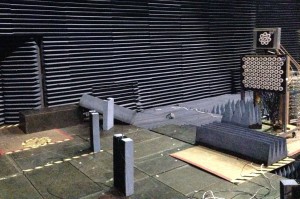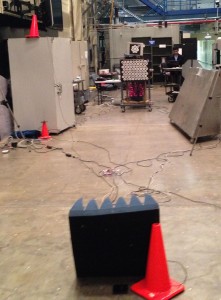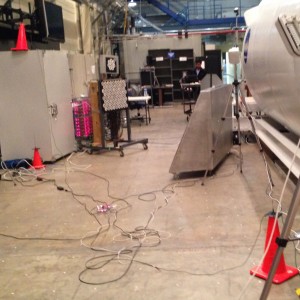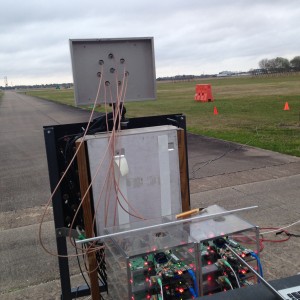SoftNull Dataset
In our recent work, we proposed transmission beamforming based self-interference reduction for massive MIMO systems. The technique labeled SoftNull, eliminates the need for analog cancellers and hence use many antennas to enable a new functionality in “software,” i.e., current half-duplex radio based architecture can be used to achieve full-duplex behavior.
SoftNull Dataset is available at the following link. The files are on a Google drive – choose download option in the dialog.
The dataset was collected by Evan Everett and Clay Shepard, with support from NASA (big thanks to them!). If you have any questions about the dataset, please contact Rice graduate student Xing Zhang at xz32@rice.edu.
To cite the dataset, please use the following BibTeX entry
@article{SoftNull,
Author = {Evan Everett and Clay Shepard and Lin Zhong and Ashutosh Sabharwal},
Journal = {IEEE Transactions on Wireless Communications},
Title = {SoftNull: Many-antenna Full-duplex Wireless via Digital Beamforming},
Volume={15},
Number={12},
Month= {December},
Pages = {8077 — 8092},
Year = {2016}}
Dataset description:
The data for SoftNull was collected in three environments: Anechoic Chamber (file start with chamber), indoor (with rich scatters) and outdoor, all at NASA; see pictures below.
In chamber environment, there is one reflector, except for one case of Chamber-ReflectInfft0deg.mat, which is the same chamber environment without the reflector.
In the indoor environment, there are a lot of reflectors (see pictures below). Location of 2 of the 4 mobiles is also shown.
Outdoor environment is an open field as shown below.
In each measurement, we have 80 antennas at the base station (72-antenna plane array at the bottom and 8-antenna circular array at the top) and 4 single antenna users. So we have 84 antennas in the whole system of 5 nodes. Then we let each antenna transmit pilot in turn, and all other antennas are in receive mode to measure the channel response (AGC is enabled). Thus we will have channel response matrix of dimension 84*84 for each subcarrier. 1-72 is the antenna index of the plane antenna array, 73-80 is the antenna index of the circular antenna array, and 81-84 is user antenna index.
Each dataset (i.e. each .mat file) includes two structs, one is experimentSetup, it records the related gain settings; the other one is pktResult, it is a 1*25 struct, which records data for 25 packets. For each packet, pktResult includes channelResponse and other related values. For example, when we want access to the channel response corresponding to packet 1, then we get it from pktResult(1).channelResponse, we have an 84 X 84 X 64 matrix. The first dimension is the receive antenna index, the second dimension is the transmit antenna index, and the third dimension is subcarrier index.
Note that the array height is very low for an infrastructure node. So the data represents the worst case for a base-station deployment, and hence the SoftNull gains can be seen as a lower bound for actual deployments. Actual base-station deployments will have higher array heights and hence will have to deal with less back-scattering reflections that increase self-interference.





